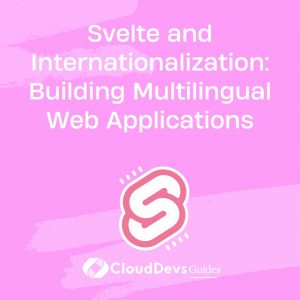Hire Senior Svelte Developers from Your Local Time Zone within 24 Hours
Access senior Svelte developers from our 8000+ pre-vetted Latam-based talent pool.
CloudDevs provides a comprehensive solution for hiring top-notch Svelte developers, with access to a pool of over 8000 highly-vetted senior professionals. Our platform ensures seamless collaboration and expertise by offering exclusive access to elite Svelte developers from your local time zone.
With a 7 day risk free trial

Our Svelte Developers
Our top talents come from world leading companies
Fabio
Development of trading systems Ex-Bancolombia


Matheus
Machine Learning Engineer Ex- Banco do Brasil


Jair
Senior Machine Learning Engineer Ex-Grupo Boticário


Renan
Software Engineer Ex-Microsoft


Icaro
Quality Analyst Ex-Ypê


Deyber
Software Developer Ex-Pragma


Carlos
MLOps Engineer Ex-KLYM


Pedro
System Analyst Trainee Ex-Wipro




Melissa B
Founder


Jason Dong
Co-CEO, Founder

Anthony E
Co-Founder
How to Hire Svelte Developers
through CloudDevs?
3 easy steps to hire Svelte developers in 24 hours



1. What is Svelte?
Svelte is a modern JavaScript framework that streamlines web app development. Unlike traditional frameworks, it compiles most tasks into optimized code during building, enhancing performance. Its unique reactivity updates the actual DOM for faster user interface changes.
Components are the foundation, combining visual elements and functionality for easier management. Svelte’s HTML-like template syntax simplifies UI creation, and special syntax aids data connections and user interactions. “Stores” manage shared reactive data.
Svelte simplifies animations, offers lifecycle methods, and includes a CLI for project setup and optimization. Its innovative approach prioritizes performance and simplicity, though it’s essential to align its suitability with project needs and team expertise.
2. Why Hire a Svelte Developer?
Hiring a Svelte developer can bring numerous advantages to a web development team. Svelte’s unique approach to building web applications, focused on compile-time optimization and efficient reactivity, demands a specific skill set that a dedicated Svelte developer can provide. With expertise in Svelte, a developer can create applications that load faster, perform more smoothly, and offer an enhanced user experience due to the framework’s direct DOM updates. The ability to harness Svelte’s component-based architecture, along with its intuitive template syntax and built-in animations, empowers developers to efficiently build and maintain complex user interfaces. This expertise also extends to managing application state through Svelte’s store system and implementing smooth transitions. Overall, hiring a Svelte developer can significantly contribute to delivering high-performance, visually appealing, and responsive web applications.
3. How to Write a Svelte Developer Job Description?
Crafting an effective job description for a Svelte developer role is crucial for attracting the right talent and ensuring a successful hiring process. A well-written job description accurately communicates the responsibilities, expectations, and qualifications required for the position. It should highlight the importance of Svelte expertise, emphasizing the specific skills and experience needed to excel in building efficient and dynamic web applications using the framework.
A comprehensive job description provides candidates with a clear understanding of the role’s responsibilities, such as developing and maintaining responsive user interfaces, optimizing application performance through Svelte’s compile-time features, and collaborating with cross-functional teams to deliver high-quality projects. It should also outline any specific project requirements or industry contexts the developer will be working within.
By articulating the required qualifications, including proficiency in Svelte, JavaScript, HTML, CSS, and potentially other relevant technologies, the job description ensures that candidates self-assess their fit for the role. Additionally, mentioning desirable qualities like problem-solving skills, familiarity with state management using Svelte’s store system, and a passion for staying updated with the latest web development trends can help attract candidates who align with the company’s values and goals.
Ultimately, a well-crafted job description serves as the initial point of contact between the company and potential candidates. It not only helps in attracting skilled individuals but also sets clear expectations from the outset. This clarity fosters a smoother recruitment process, reduces mismatches, and increases the likelihood of finding a Svelte developer who can contribute effectively to the team’s success in building optimized and responsive web applications.
4. How to Find and Hire The Best Svelte Developers?
Finding and hiring the best Svelte developers requires a strategic approach. Here’s a step-by-step guide to help you through the process:
-
Define Needs: Clearly outline skills and responsibilities.
-
Craft Job Description: Emphasize Svelte skills and company culture.
-
Use Platforms: Post on job boards, LinkedIn, and developer communities.
-
Review Portfolios: Evaluate Svelte projects and experience.
-
Assess Skills: Create coding challenges focused on Svelte.
-
Interview Fit: Evaluate technical and cultural alignment.
-
Offer Competitive Pay: Provide attractive compensation.
-
Highlight Growth: Outline career advancement opportunities.
-
Remote Hiring: Consider remote options.
-
Showcase Culture: Emphasize learning and work-life balance.
-
Freelancers: Hire freelance Svelte experts for specific tasks.
-
Recruitment Agencies: Use specialized agencies if needed.
Efficient hiring can secure skilled developers who enhance your projects’ quality and innovation. For more information on hiring the best Svelte developers, refer to our Svelte Developer Hiring Guide here.
5. What’s The Cost of Hiring Svelte Developers?
The cost of hiring Svelte developers can vary widely based on several factors:
-
Geographical Location: Salaries differ by region and country. Developers from regions with a higher cost of living generally command higher salaries.
-
Experience Level: Junior developers will cost less than mid-level or senior developers due to differences in experience and skill set.
-
Skill Set: If a developer has a broader skill set beyond Svelte, they might command a higher salary.
-
Freelancer vs. Full-time Employee: Freelancers may have hourly rates or project-based fees, while full-time employees typically have monthly salaries.
-
Contract Length: Short-term contracts might be more expensive on an hourly basis compared to longer-term contracts.
-
Benefits and Perks: Full-time employees come with additional costs like benefits, insurance, and other perks.
-
Remote vs. On-site: Hiring remotely might affect salary expectations, as remote developers often have different cost considerations.
-
Freelancer Platform Fees: If hiring through platforms like Upwork, consider the platform’s fees, which can impact the overall cost.
-
Recruitment Costs: If using recruitment agencies, there might be fees or commissions.
-
Project Complexity: If the project requires specialized Svelte expertise, developers with those skills might command higher rates.
In the United States, junior Svelte developers might earn around $50,000 to $80,000 annually, mid-level developers could earn between $80,000 and $120,000, while senior developers might command salaries upwards of $120,000. Freelancers’ rates might range from $30 to $100+ per hour, depending on their expertise.
Remember that these figures are approximate and can vary significantly based on the factors mentioned above. It’s important to research the current market rates in your specific region and industry and to negotiate salaries or rates based on the developer’s skills, experience, and the requirements of your project.
6. What are The Top Skills Required for Svelte Developers?
Svelte developers with certain skills are in high demand due to the framework’s unique approach and its growing popularity. Here are some skills that are particularly sought after for Svelte developers:
-
Svelte Expertise: Naturally, a strong command of the Svelte framework is essential. This includes understanding Svelte’s reactive programming model, component structure, and the way it optimizes for performance during compilation.
-
JavaScript: A solid foundation in JavaScript is crucial, as Svelte heavily relies on JavaScript for creating dynamic and interactive user interfaces. Familiarity with modern JavaScript features and ES6+ syntax is important.
-
HTML/CSS: Svelte developers should be proficient in HTML and CSS to effectively structure and style their components and applications.
-
Reactive Programming: Understanding reactive programming principles is vital, as Svelte’s reactivity model drives the framework’s real-time updates to the DOM.
-
State Management: Proficiency in managing application state using Svelte’s store system is valuable. Knowledge of when and how to use stores to handle data shared across components is crucial for building scalable applications.
-
Component-based Architecture: Svelte developers need to grasp the concept of creating reusable and modular components, which is a key aspect of building maintainable and efficient applications.
-
Optimization Techniques: Since Svelte excels in compile-time optimization, knowledge of techniques to further optimize performance, such as minimizing bundle sizes and rendering efficiency, is valuable.
-
UI/UX Design: Having an eye for design and understanding user experience principles can enhance the quality of the user interfaces created by Svelte developers.
-
Animations and Transitions: Svelte’s built-in support for animations and transitions is a valuable feature. Proficiency in creating smooth animations can make applications visually appealing.
-
Problem-Solving: Strong problem-solving skills are crucial for overcoming challenges that may arise during development, whether they’re related to Svelte-specific issues or broader web development problems.
-
Version Control (Git): Proficiency with version control systems like Git is essential for collaborative development and tracking changes in code.
-
API Integration: Depending on the project, integrating APIs and working with external data sources might be required. Familiarity with RESTful APIs or GraphQL can be beneficial.
-
Testing: Understanding testing methodologies and frameworks for JavaScript and Svelte applications is valuable for ensuring the stability and reliability of the codebase.
-
Continuous Learning: The web development landscape evolves rapidly. Svelte developers who stay updated with the latest Svelte releases, web standards, and best practices are highly sought after.
Svelte is a relatively new framework, and the demand for skilled developers is increasing. A combination of Svelte-specific skills and foundational web development knowledge is key to excelling in this field.
7. What are The Use Cases for Svelte Programming Language?
Svelte is used for building modern and dynamic web applications. It is primarily used for creating user interfaces (UIs) that are reactive, interactive, and performant. Here are some common use cases and scenarios where Svelte is used:
-
Web Applications: Svelte is used to build a wide range of web applications, from small single-page applications (SPAs) to larger, more complex applications. It’s reactive nature and efficient updates make it suitable for creating dynamic and responsive user interfaces.
-
Front-end Development: Svelte is often used by front-end developers to create the visual and interactive components of a website or web application. Its component-based architecture promotes modularity and reusability.
-
Real-time Dashboards: Svelte’s ability to handle real-time data updates and smooth animations makes it well-suited for creating interactive dashboards that display live data and analytics.
-
Data Visualization: Svelte can be used to create visually appealing and interactive data visualizations, charts, graphs, and diagrams that help users understand complex data sets.
-
Prototyping: Developers use Svelte for quickly prototyping user interfaces and testing different design concepts. Its simplicity and intuitive syntax make it easy to experiment with ideas.
-
Single-page Applications (SPAs): Svelte can be used to build SPAs where content is dynamically loaded and updated without requiring full-page reloads. Its reactivity allows for seamless navigation and data updates.
-
Progressive Web Apps (PWAs): Svelte can be part of building PWAs, which are web applications that provide a native app-like experience on the web, including offline access and push notifications.
-
E-commerce Platforms: Svelte can be used to create interactive product catalogs, shopping carts, and checkout experiences on e-commerce websites.
-
Interactive Forms: Svelte’s reactivity makes it useful for creating forms that dynamically validate user inputs and provide real-time feedback.
-
Micro-frontends: Svelte can be employed in a micro-frontend architecture, where different parts of a web application are developed independently and integrated into a cohesive whole.
-
Educational Tools: Due to its approachable syntax and straightforward concepts, Svelte can be used for building interactive educational tools, coding exercises, and tutorials.
-
Web Games: Svelte’s performance and animation capabilities make it suitable for developing simple web-based games and interactive experiences.
Remember that Svelte, like other web frameworks, can be adapted to various use cases based on the specific requirements of the project. Its unique compilation approach and reactivity make it particularly appealing for scenarios where performance and efficient updates are important.
8. Is Svelte Faster than React?
Svelte and React are both popular JavaScript frameworks for building user interfaces, but they have different underlying philosophies and approaches to achieving performance. It’s important to note that “faster” can refer to various aspects of a framework’s performance, including initial load times, rendering speed, and overall user experience.
Svelte’s Approach: Svelte takes a unique approach to achieving performance. It shifts much of the work that traditional frameworks do at runtime to compile time. During the build process, Svelte compiles components into optimized JavaScript code that directly manipulates the DOM. This can lead to smaller bundle sizes and efficient updates, resulting in faster initial load times and smoother interactions.
React’s Approach: React, on the other hand, uses a virtual DOM and a process called “reconciliation” to efficiently update the actual DOM. It performs a diffing algorithm to identify changes in the virtual DOM and then applies those changes to the real DOM. React’s approach optimizes the number of DOM manipulations, which can lead to good performance.
Performance Comparison: In terms of raw rendering speed, Svelte’s approach of compiling components at build time has the potential to offer faster updates and interactions compared to React’s runtime virtual DOM diffing. This can translate to better user experiences, especially for complex applications.
However, it’s important to consider that both frameworks can achieve excellent performance with proper coding practices and optimizations. The performance difference between Svelte and React might not be substantial for every use case, and factors such as developer familiarity, ecosystem support, and the specific needs of your project also play a role in the decision-making process.
Ultimately, whether Svelte is faster than React depends on the specific context and goals of your project. It’s recommended to benchmark both frameworks with your application’s characteristics and requirements to make an informed decision.
Table of Contents
Svelte FAQs
Svelte is an open-source JavaScript framework used for building modern, reactive, and performant web applications. It shifts much of the work from runtime to compile time, resulting in efficient updates and smoother user interfaces.
Hiring Svelte developers can help you create high-performance web applications with efficient updates and dynamic user interfaces. Svelte’s unique approach and reactivity make it a valuable skill for building responsive and interactive UIs.
Look for skills such as proficiency in Svelte itself, JavaScript, HTML, CSS, reactive programming concepts, component-based architecture, state management using Svelte stores, and optimization techniques for performance.
Use technical assessments and coding challenges focused on Svelte. Ask candidates to explain their experience with Svelte, their approach to solving Svelte-specific challenges, and their contributions to Svelte projects.
Freelance Svelte developers can provide expertise for specific tasks or short-term projects. Freelancers are often experienced professionals who can deliver specialized solutions quickly.
A skilled Svelte developer can enhance your team’s ability to build high-performance web applications with efficient updates, smooth animations, and dynamic user interfaces. They can contribute to creating modern, responsive, and interactive UIs.
Empower Your Vision with Svelte Developers from Your Local Time Zone!
Uncover proficient Svelte developers from our handpicked assembly of over 8000 skilled professionals. At CloudDevs, we bring you a simplified approach to hiring top Svelte talent, granting you access to adept developers aligned with your local time zone. Craft exceptional applications with confidence, powered by our dedicated Svelte experts who transform your concepts into reality.














